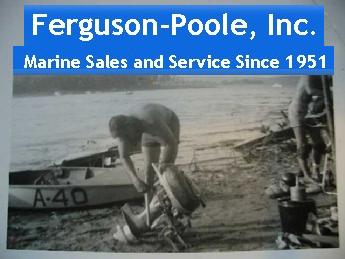Spookeay Marine, Hanover, Alabama
The most neglected part of your boat, is often the hull bottom. It might be a ticking time bomb that could lead to a premature end to your boating season and budget.
1. A Brief History of Marine Fiberglass
Some 50 years ago, fiberglass came into wide use in the marine industry.
Like brick or plastic, fiberglass hulls were at first thought to be non-porous, waterproof, and maintenance-free. Well, they're not! Since then, even the highest-quality fiberglass, laid in the best way, has been shown to be susceptible to water permeation.
2. The Nitty-Gritty
UV (ultraviolet) exposure from the sun begins this chain-reaction process.
Over many seasons, when coupled with temperature cycling, hull flexing, lack of proper maintenance, normal use - or even abuse, the 'gel coat' expands and contracts, exposing or developing microscopic pinholes, allowing water seepage into the fiberglass that causes:
- Spider web cracks;
- Osmotic blisterring (Silver Dollar-size welts);
- Delamination; and,
- Hull failure, ultimately, if left unchecked.
This process occurs despite anti-oxidants, UV-absorbents, and other protective ingredients. Fiberglass destruction really takes off when the 'gel coat' (a colored, non-paint, epoxy/composite material that helps protect the fiberglass, and give the boat its final color) decays or wears-off.
Are you scared, yet? Well, don't be. Your boat CAN be saved. But, you need to do a little hard work, first (you're not scared of a little hard work, are ya?)
3. Boat life the wrong way: Fast and Furious
Hey, we've all done it: we take the boat to the lake (or live there). After a hard day on the water, we park our boat like we'd park our vehicle. We'll jump out, go inside, crack open a cold one, and NEVER check our boat's hull, just like we'll never check our engine fluids or car tires.
Does the boat EVER come out of the water?
Do we EVER look at it?
Do we EVER clean it?
Maybe once a year in the springtime - that once a year bath. What do we find? A bubble here, a crack there? Oh well, it's not too bad. We'll get to it some other time, or next season.
Hello! The Reaper's ringin' your doorbell! But, you're not listening!
4. Boat life the right way: Preventative Maintenance ('PM')
When you look at your spouse, you notice their bottom, don'tcha? Well, you need to take that close a look at your boat's bottom, too, if you want it to be around a long time.
First, get your boat high and dry. Then, CLEAN your hull thoroughly and meticulously, especially below the water line. I recommend using a cleaning product called "On and Off", available from West Marine. Do not use this product near any area that may have run-off into a body of water. It is not safe for marine waters. It's a type of acid that will kill grass or fish, if concentrated.
Next, after a thorough cleaning, look at your hull below the water line for all the signs listed above. If you find any spiders, yell, EEK! But if you find any spider web CRACKS in your 'gel coat', or your hull looks like it has the chicken pox, you should get a professional examination from a marine surveyor.
If, after inspection, your hull looks healthy, apply a good wax or marine-type sealer. I recommend using a wax such as McGuire's; it's cost-effective for the protection needed in a fresh-water environment.
5. COVER YOU BOAT!
Many boaters think that, just because boats were made to be in and around water, they can be rained on. Not true!
If you don't cover your boat, or leave it in a way that rain water can accumulate inside and not drain out, you're just asking for trouble. Wonder why your floor is rotting, the gauges are foggy, and the hardware is pitted and stained?
Carpet holds water much longer than it would nomally evaporate from fiberglass. Water got in, and now it can't get out. Leave that rain water inside your fiberglass boat long enough, and you'll have blisters inside the hull, too!
I can't tell you just how many boats I see stored for the winter, uncovered.
Even owners of a 'K' car will cover their 'prize possession'. Why not you?
PLEASE, folks, COVER YOUR BOAT!
6. Afterword, but not the last word
The moral is: Know your boat like you know your body - or you spouse's. Hull damage is like cancer: catch it early, and it's survivable!
If all else fails, or if you have any questions, we'll be happy to help.
Please call Spookeay Marine at 256-404-1330.












